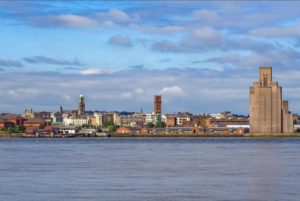 An £85m regeneration project in Gloucester has taken a step forward with the demolition of the ageing Grosvenor House building and former bus station.
An £85m regeneration project in Gloucester has taken a step forward with the demolition of the ageing Grosvenor House building and former bus station.
However, it’s happening alongside archaeological work to uncover what could be nationally important heritage assets.
It is believed that the missing Whitefriars monastery could be found under the existing bus station, and demolition work will allow the site to be excavated before building work to create the new development begins.
It is also hoped that by digging seven trenches ranging from 20m x 2m and 2m x 2m around the site, further parts of the original Roman city Glevum, thought to have been there since 1268, and evidence of a medieval and possibly Saxon settlement will be revealed.
Cllr Paul James, leader of Gloucester City Council, said: ‘It’s incredible to think of what lies beneath our city and that somewhere around this area could be Whitefriars Monastery. If we do manage it find it, it will help us to better understand the history of this part of the city and we can ensure whatever remains is preserved ahead of the regeneration of the area.’
Specialists Oxford Archaeology have been appointed to carry out the archaeological works by Gloucester City Council.
Andrew Armstrong, archaeologist at Gloucester City Council said: ‘We have already uncovered evidence of two Roman buildings and parts of what we think were the monastery chapel were found in 1974 – so we are keen to explore if this missing monastery does sit under the bus station.
‘We are required to research sites before any major new developments take place, so we know exactly what archaeology is there. We will then work to ensure that archaeological remains are preserved beneath the new buildings.’

















Leave a Reply